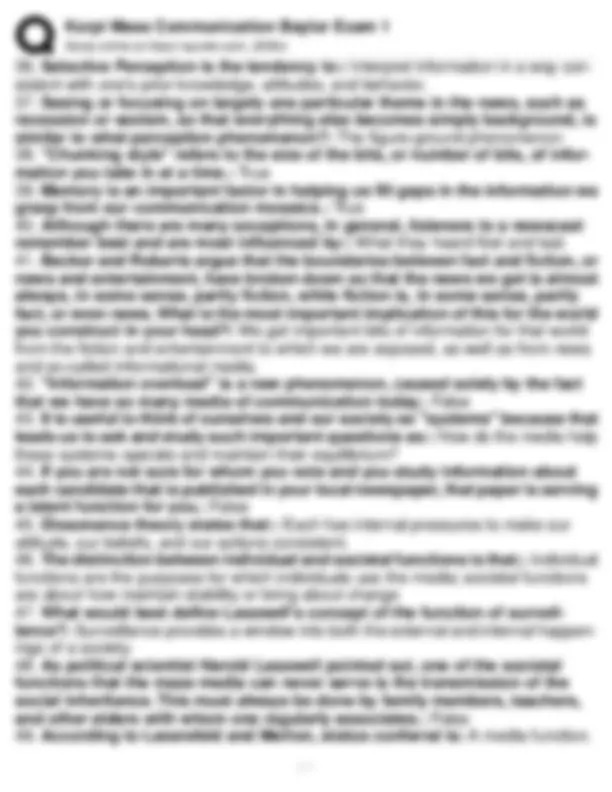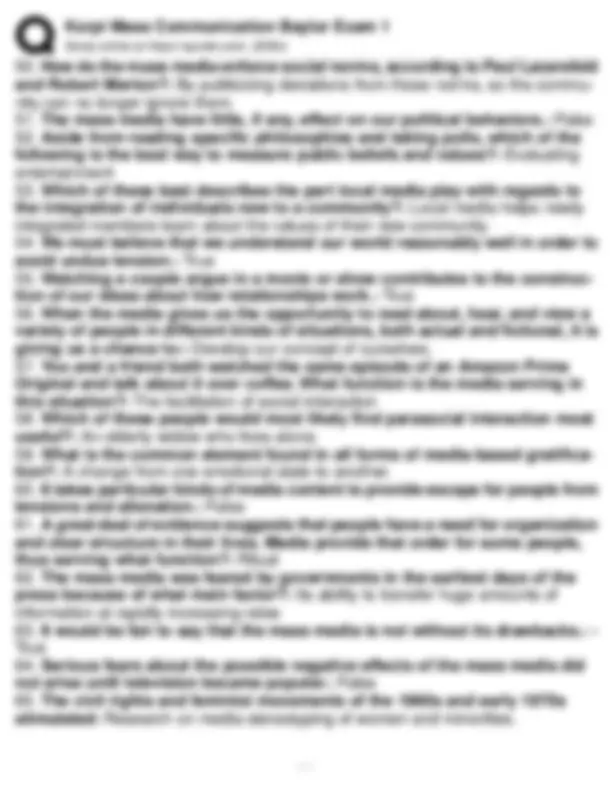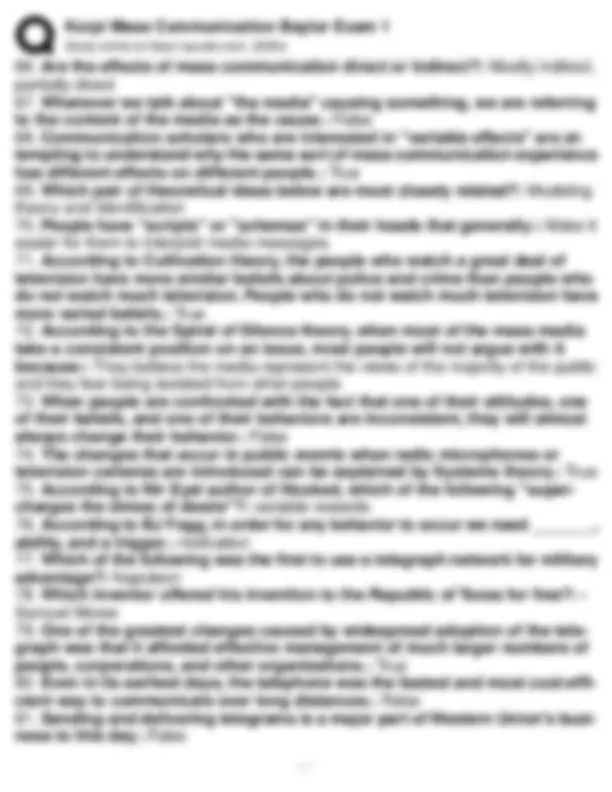
Korpi Mass Communication Baylor Exam 1
Study online at https://quizlet.com/_809fzl
1. Although the mass media often operate relatively independently of each
other, they form a tightly integrated system in your use of them.: True
2. The authors argue that understanding media as a ________, and from the
vantage point of a _______, will help you understand individual media in
different and more useful ways than you did before.: system, receiver
3. Virtually everyone forms their picture of the world based on one medium
and message at a time.: False
4. The creators of media messages--like journalists, producers, and advertis-
ers--have far more control than you do over the information and meanings that
you get from the media.: False
5. The most important element in the mass communication system is not the
printing press, the camera, or the communication satellite; it is you.: True
6. There are 4 worlds of information; which world consists of everything that
is within range of your perception in your lifetime?: Second
7. The first world is the world in your head.: False
8. With a reasonable amount of effort and focusing on just one specific topic, it
is possible to read, listen to, or view all of the information for that topic.: False
9. Your understanding of war has a one-to-one relationship with all of the bits
of information about war you have encountered in your lifetime, since these
are the bits that make up your fourth world.: False
10. Which one of the following worlds is the same for everyone?: First
11. On almost any important issue, as time goes on you are exposed to a
steadily increasing number and variety of bits of information, as well as
encountering some of the same bits many times.: True
12. Who or what is most responsible for the kinds of information to which you
are exposed?: You
13. In assessing scientific models, we are primarily concerned with simplici-
ty.: False
14. Which of the following is NOT true of models?: Tend to draw ones attention
to specific instances
15. An "uncertain analogy" is:: The most interesting property of a model because
it leads to new predictions that can be tested.
16. The most important function of feedback is to:: Help sources adjust their
communication to their audience.
17. The Westley-MacLean model of communication is useful in that it adds
feedback as an important element in the communication process.: True
18. The Source-Message-Channel-Receiver model of communication grossly
distorts the great differences among individuals in patterns of exposure and
ways of processing the information they receive.: True
1 / 7














